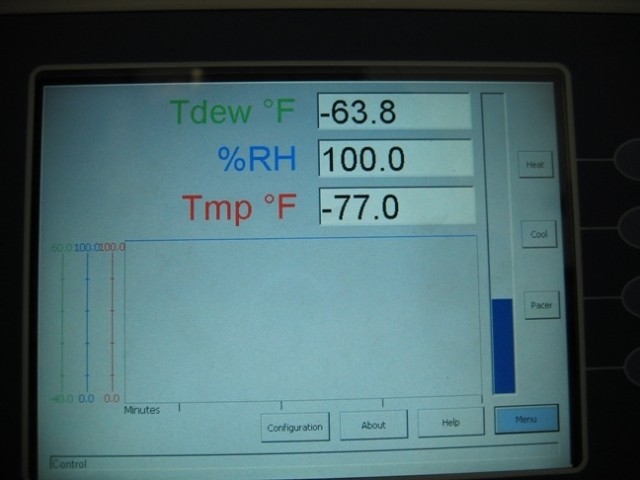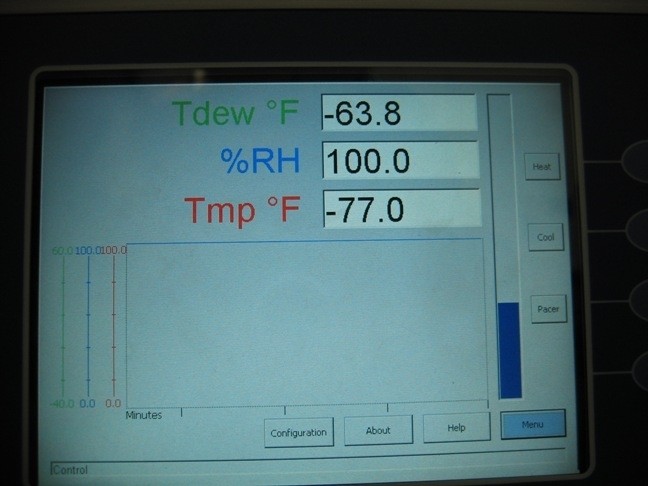NATICK, Mass. - During the week of Jan. 28, the Doriot Climatic Chambers at the U.S. Army Soldier Systems Center got a workout.
The Doriot Climatic Chambers are a facility that can reproduce environmental conditions occurring anywhere around the world. They can simulate temperature, humidity, wind, rainfall and solar radiation. These conditions can be setup separately or run concurrently.
The Army, which owns and operates this facility, uses it as part of the SSC's research and development mission ensuring that gears being developed for Soldiers can survive the rigors of world-wide extreme conditions.
The Doriot Climatic Chambers are a unique testing facility, allowing the Army to conduct equipment and human-performance testing in a laboratory environment, where they can manage precise climatic conditions over extended periods of time.
But this particular test was not being conducted for, nor was it funded by the Army. This evaluation was paid by and conducted by ABB Inc., Mount Pleasant, Pa., under a program that allows the military to lease their facilities to private sector companies.
ABB Inc., a private electrical contractor, took advantage of this program to evaluate their equipment at temperature extremes in the Arctic Wind Tunnel of the Climatic Chambers.
The Arctic Wind Tunnel has the ability to create temperatures ranging from minus 70 degrees below zero to 120 degrees Fahrenheit with 10 to 90 percent relative humidity. Rain can be simulated at rates up to four inches per hour with wind up to 40 miles per hour.
"Last year the company [ABB] found out we had the capabilities they needed to do the testing," said Joshua Bulotsky, electrical engineer. "We were able to do some testing for them at the extreme capabilities they needed last year, and although they got some good data, they needed more in order to finalize their design."
Large high voltage circuit breakers were the items that were put through the trials. "These items would be used in extreme cold weather areas, such as Northern China, Canada, anywhere where the temperature would be below minus 50 degrees [Fahrenheit] and have winds," said Steve Ryan, manager, Total Quality, ABB.
Jason Stull, development engineer, ABB, said, "The benefit of doing this type of test here [in the Climatic Chambers] is the wind application. You can simulate cold with gas, but [SSC] is one of the few places that also has wind. Wind has a big impact on performance."
Testing was done from zero degrees Fahrenheit to 45 degrees below zero and from zero degrees Fahrenheit to 78 degrees below zero, ultimately making it the coldest temperature that the Arctic Wind Tunnel has ever been at. The wind speeds ranged from 3 to 35 miles per hour.
Ryan said people often take circuit breakers for granted. They are items you don't usually see, he continued, because they are often located in substations or remote areas. However, he said that if the gas gets too cold in the breakers, the breakers go into lockout operation and you can't open them until they warm up again. This could shut down power for an entire section of a city.
"This type of testing allows us to further exhibit the reliability of the product," said Ryan. "This year we did modifications to adjust the power supply," he commented. "We used a different heating and insulation package."
ABB needed to see what impact these changes would have in extreme environments. "They needed to see where there might be problems and try to resolve them," Bulotsky said.
He also mentioned that within the past year, new mechanical equipment has been installed in the chambers, along with updated computer control systems in the Arctic Wind Tunnel monitoring room and even new flat screen TVs to display graphics.
This year the chambers have been performing even better than previous years due to the new mechanical equipment and also upgrades, Bulotsky continued. Because of this, the researchers from ABB had gotten a significant amount of good data by the fourth day of their five-day test. The fifth day became almost a bonus day.
Ryan and Stull both described the personnel at SSC as extremely professional and helpful. "Whatever we wanted, within the limitations of the equipment, we got," said Stull, "even if it was late nights or early mornings."
The Doriot Climatic Chambers also has a Tropic Wind Tunnel. The Tropic Wind Tunnel has the ability to create temperatures ranging from 0 to 165 degrees Fahrenheit with 10 to 90 percent relative humidity. Rain can be simulated at up to 4 inches per hour with wind up to 40 miles per hour. Solar load can be simulated with a system consisting of six rows of 250-watt light bulbs.
Due to law 10 U.S.C. A,AS 2539b, the SSC is now able to offer testing services to private industry such as ABB. And because SSC is a government research, development and engineering center, no profit is earned on testing services.
Therefore, private companies looking to evaluate products can do them in the unique testing facilities of the chambers for low-cost, with highly rated and experienced staff available, along with state-of-the-art equipment.


Social Sharing